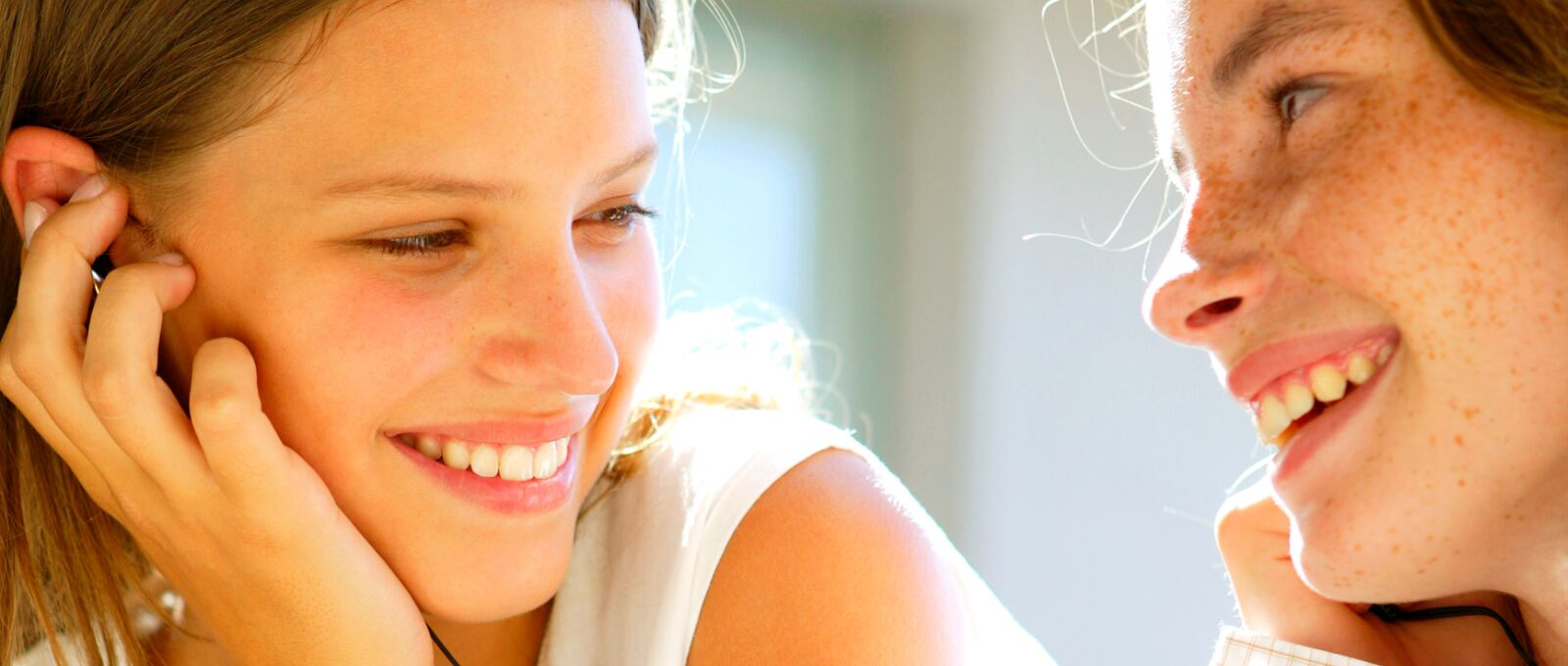Does this sound familiar?
You are driving your daughter and her two friends to a soccer game and the car is unusually quiet. They must be mentally preparing for the big game, you think. How nice. You maintain this illusion until you hit the first long red light at which point you glance into the back seat. Far from calm, the girls’ thumbs are getting the workout of a lifetime. “Who are you all texting?” You ask, suddenly realizing that the deceptively quiet ride has been host to a frenzy of social connections. Your daughter absentmindedly responds, “each other!” Her friends giggle without looking up from their phones.
Texting to connect
The idea of texting someone who is sitting two feet from you might seem crazy to a lot of parents. Yet teens consistently report that they are more likely to contact their friends via text on a daily basis than talk on the phone or engage in face-to-face communication.
Digital technologies have unleashed incredible potential for young people to stay connected with one another, their parents, and a world of information. Young digital citizens are blowing apart the image of an alienated child sitting alone in front of a glowing screen. Instead they are connecting with each other across geographic boundaries, collaborating in virtual space, and building vibrant communities online.
Are emoticons enough?
Yet there is something unsettling about this always connected childhood. Is there a social cost to our kids’ booming virtual social life? How does online time impact our kids’ offline relationships? Is there a difference between a crestfallen face and an emoticon? Or am I, at age 31, already old fashioned?
Let me be clear that I try to guard against the urge to sit around lamenting the loss of “the good ol’ days” (which in some ways weren’t always so good to begin with). I firmly believe that technology can benefit kids and adults in all sorts of ways.
Yet emerging research is helping us better understand the need to balance tech enthusiasm with age-old practices like turning towards each other. Face to face.

The social costs of media multitasking
Clifford Nass’ recent article in Developmental Psychology shows that among tween girls, heavy media multitasking and high levels of media use are associated with a host of negative social experiences. According to his study, tween girls (ages 8-12) who were heavy media users reported feeling less social success, less feelings of social normalcy, and sleeping less. Nass found a clear, albeit not causal, relationship between some media habits and diminished social and emotional skills.
The antidote: face-to-face communication
So what do we do with this information? Throw Facebook and cell phones out the window? Of course not. That’s the exciting thing about Nass’ research. It turns out that there is a clear and powerful antidote to the negative social consequences of chronic multitasking: face-to-face communication. Tween girls who have more face-to-face communication report greater feelings of social success, greater feelings of social normalcy, and more sleep. This was true even when these girls had high media use. In other words, face-to-face time protects tween girls.
Our kids might be born into this world hardwired for empathy and connection, but they need a lot of practice to fully develop these skills. It turns out that humans are complex creatures. Learning to read emotions and respond to them is hard work. Girls ages 8-12 are in a critical period in their development where they are learning to navigate the tricky contours of relational emotions on their own. It is no surprise that if they don’t practice, they won’t do it as well. Whatever the brain does a lot of, is what the brain gets good at.
So let’s celebrate the incredible connectivity of the digital age. Let’s also give young girls the critical experiences they need to take care of their own hearts and attend to the hearts of others.
Let’s encourage them to face each other and talk. Here are 7 ways to get face-to-face with your tween.